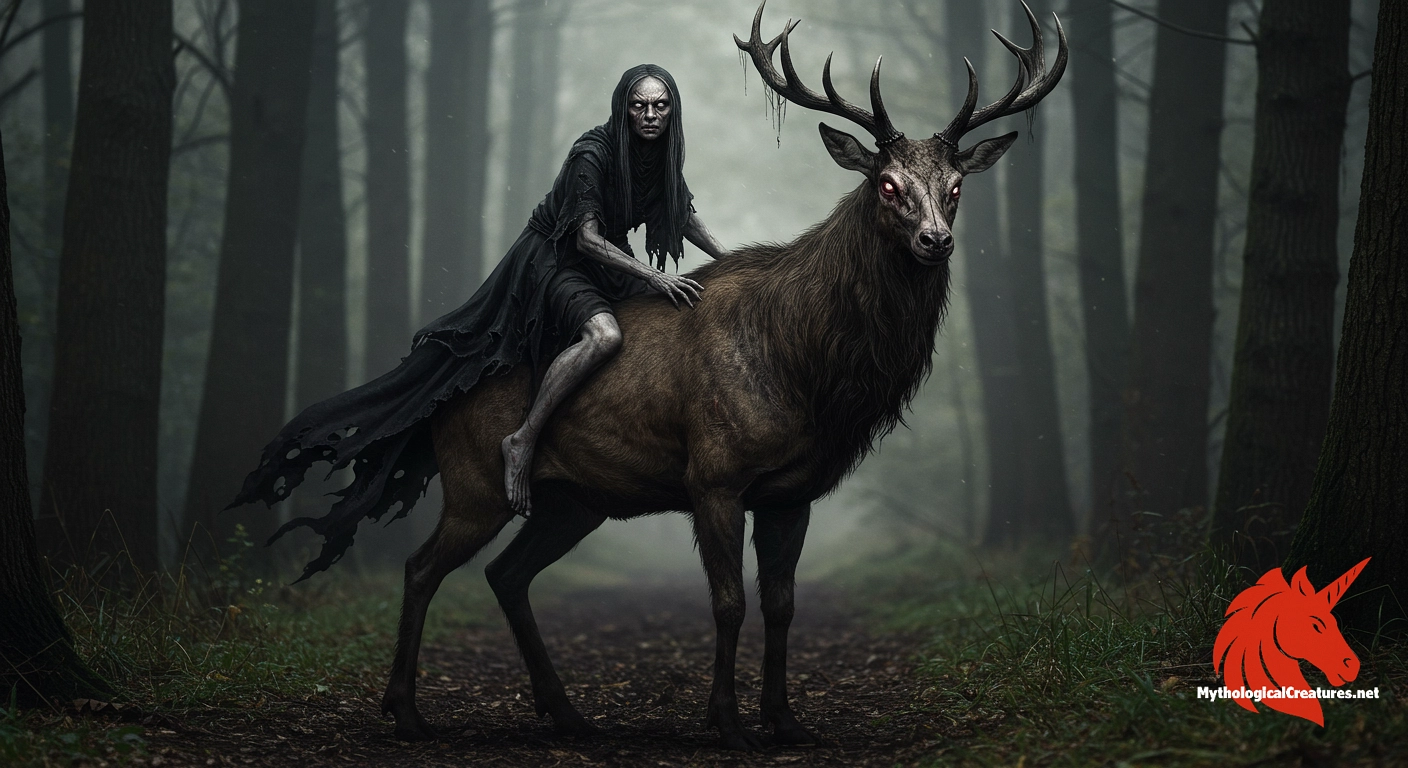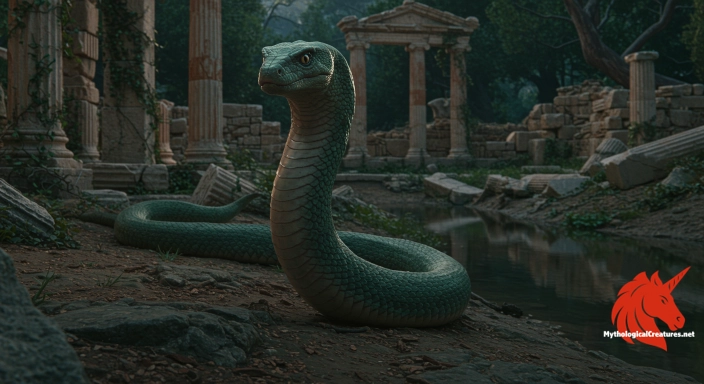Buckriders: Buckriders are a notorious group of male witches from South-Eastern Dutch and North-Eastern Belgian folklore.

Buckriders
Buckriders - The Buckriders exemplify the fusion of criminality and occult practices during a time of social upheaval, influencing defensive architecture and contributing to one of the darkest chapters in regional witch trial history.
Origins & First Encounters
Buckriders are notorious figures steeped in the folklore of South-Eastern Dutch and North-Eastern Belgian regions. They emerged from a conflation of local criminality, witchcraft, and diabolical superstition that captured the public imagination. Early accounts, though shrouded in myth, suggest that accusations of buckriding date back to the tumultuous interplay between medieval traditions and emerging modern anxieties. Legends recount that these enigmatic figures rode the night skies on supernatural bucks obtained through pacts with the Devil. Indigenous narratives painted them as both agents of chaos and symbols of societal transgression. Their tales became intertwined with periods of legal and religious upheaval, when communities sought explanations for unaccountable misfortunes. The resulting stories captivated audiences, blending fear with moral caution and ritualistic symbolism. Over time, these narratives provided a framework for understanding the dynamics of social control and the mystery of the occult. In this way, the buckriders have evolved into enduring icons of a complex cultural legacy that bridges the human and the supernatural.
Source Texts & Tale Variants
Multiple historical documents and court records from the 18th century reference buckriders as part of a broader wave of witch trials and criminal persecutions. Legal proceedings from that era interwove charges of robbery with accusations of diabolic pacts and ungodly oaths. Folklore and oral traditions enriched these stark records with imaginative details and vivid imagery, creating a tapestry of myth and fact. Parish registers and trial manuscripts describe suspects who solemnly renounced divine allegiance in favour of sinister forces. Varied accounts appear in different languages, with Dutch sources naming them Bokkenrijders while French records refer to them as Chevaliers du bouc. The blend of legal evidence and folkloric embellishment is particularly striking, as both serve to amplify their diabolical reputation. Archivists and local historians have since re-examined these texts, seeking to disentangle historical events from sensational myth. Overlapping narratives demonstrate how judicial documents became fertile ground for the growth of a powerful legend. Consequently, these diverse sources have cemented the buckriders’ place as a subject of enduring mystery and cultural debate.
Form & Powers
Artistic renditions of the buckriders present a striking amalgamation of human form infused with demonic and bestial features. The figures are typically depicted in dark, flowing garments that evoke both the imagery of outlaw bandits and that of occult practitioners. Central to their portrayal is the supernatural buck—a creature rendered with rugged horns, a wiry physique, and eyes that seem to gleam with an eerie, otherworldly light. These mounts are imagined as swift and formidable, with exaggerated, almost mythical characteristics that set them apart from ordinary animals. Certain accounts even suggest that the buckriders themselves exhibit subtle animalistic traits, hinting at a transformation beyond the norm. The deliberate fusion of human and creature intensifies the uncanny quality of these legends, blurring the boundary between mortals and the supernatural. Varying descriptions across different sources have led to a rich visual tradition, where some depictions lean toward gaunt, spectral figures and others towards robust, menacing silhouettes. Every element—from the riders’ inscrutable expressions to the buck’s wild features—reinforces the theme of a dark, unholy alliance. In this way, the physical portrayals contribute enduring images that resonate with both fear and fascination.
Regional Faces
The legend of the buckriders exhibits notable regional variations across the South-Eastern Netherlands, North-Eastern Belgium, and parts of modern-day Germany. In rural Dutch communities, the narrative often emphasises the buckriders’ notorious nocturnal raids and the palpable dread they instigated among local inhabitants. In contrast, Belgian versions of the tale sometimes blend the figures with local supernatural traditions, imbuing them with a mix of malevolence and mischievous ambiguity. Areas such as Limburg highlight a dual identity, where the perpetrators are seen as both ruthless criminals and practitioners of forbidden rituals. Local storytellers have adapted the legend to reflect specific societal concerns, resulting in distinct visual and verbal portrayals throughout the region. French-speaking populations frequently refer to them as Chevaliers du bouc, further underscoring the fluidity and transnational nature of their myth. Regional adaptations also incorporate unique details, such as extraordinary speed and the ability to traverse vast distances before dawn. These adaptations reveal how cultural, linguistic, and historical contexts shape the details of the myth. Ultimately, the regional diversity of the buckrider legend underscores its broad appeal and enduring impact on collective imagination.
Cultural Parallels
The story of the buckriders finds intriguing parallels in other facets of European mythology, where witches and spectral riders have long roamed the collective consciousness. Similar to the familiar image of broomstick-riding witches, buckriders embody a synthesis of earthly misdeeds and supernatural capabilities. Their nocturnal journeys correlate with myths such as the Wild Hunt, in which ghostly cavalcades are fabled to roam the skies and forewarn of impending doom. Both traditions use the motif of a dark, airborne pilgrimage as a metaphor for the subversion of natural order. Additionally, the buckriders share thematic elements with werewolf legends and other shapeshifters, highlighting a cultural preoccupation with duality and transformation. These cross-cultural comparisons reveal a common narrative framework in which the boundary between normalcy and the occult becomes blurred. The integration of criminality with the occult in buckrider lore is echoed in various narratives across Europe, each reflecting local fears of the unknown. Such comparative analysis illustrates that while the buckrider myth is deeply rooted in its regional context, it also resonates with universal themes of transgression and otherness. As a result, the legend of the buckriders enriches a broader dialogue about the interplay of darkness and order in mythic storytelling.
Legacy & Modern Evolution
The evolution of the buckrider myth reflects a complex interplay between historical events and the imaginative reinterpretation of communities over time. Once embedded in harsh judicial proceedings and moral panics, the legend has come to symbolize both societal injustice and the transformative power of folklore. Early accounts of trials and torture have gradually given way to a more nuanced narrative that examines the interplay of superstition and the misapplication of authority. In modern cultural expressions, buckriders appear in literature, film, and art as enigmatic figures that encapsulate themes of marginalisation and the abuse of power. Contemporary storytellers often reframe the myth as a critical commentary on the perils of moral hysteria and the consequences of societal scapegoating. Festivals and local commemorations in the regions associated with buckriders serve to keep the legend alive, blending historical remembrance with creative reinterpretation. The dark legacy of the buckriders serves as both a cautionary tale and a source of enduring fascination. New artistic and scholarly perspectives continue to shed light on the multifaceted symbolism of these figures, examining the intersection of law, myth, and community trauma. Today, the buckrider narrative endures as a potent reminder of how history and myth can merge to both terrify and inspire subsequent generations.
Interesting Fact
An interesting facet of Buckrider lore is that many historians now view them as scapegoats, their legend born out of societal anxieties during a period of significant social and economic turbulence.
Quick Creature Info
Origin:
Features:
Associations:
Our Mythic Legendary Rating:

Also Sometimes Known As:
Habitat:
Supernatural Powers:
Physical Attributes:
Abilities:
Behavior:
Weaknesses:
Lore:
References
Discover Another Mythical Legend You May Not Have Heard Of?
Uncover the mysteries of ancient folklore and expand your knowledge of legendary beings from cultures around the world.
Dare to Meet the Meilichios....
Mythical Disclaimer: The images and data on this site are derived from various historical and literary sources, but we have found that many myths often have multiple versions and interpretations across references, sometimes contradictory. As a result, these creature depictions are artistic interpretations—imaginative blends of folklore, legend, and a dash of AI guesswork. Because creature descriptions vary widely, our illustrations and accompanying information represent our best effort to honor mythology while bridging creative gaps. Enjoy these interpretations—just remember, we've done our best to respect the stories and validate available data, but in the realm of mythology, details often shift, imagination leads the way, and nothing is ever set in stone!
Curated by the Mythological Creatures Team (rev. May 2025)
